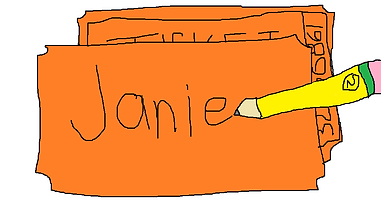Artefact three - Mathematics lesson plan
STANDARD 1: Know students and how they learn.
1.5.1: Differentiate teaching to meet the specific learning needs of students across the full range of abilities.
STANDARD 3: Plan for and implement effective teaching and learning.
3.1.1: Establishing challenging learning goals.
This Mathematics lesson was taught to class 3/4S focusing on Multiplication and Division under the Mathematics K-6 syllabus strand: Number and Algebra. This learning experience entailed a real-life application of mathematics where students were tasked to create their own receipt through ‘shopping’. The success of this lesson was based on two key points: the range of resources utilised and challenging learning goals for each numeracy group. Therefore, I collected shopping magazines from powerhouse supermarkets such as Woolworths, Coles and ALDI for students to ‘shop’. Additionally, I created templates in the form of a receipt and a shopping cart for student-use. The content of the PowerPoint was used as a mental warm up (MWU), model the activity, probe questions relating to content area, state learning intentions and student-reflection.
Ultimately, the lesson was constructed to be open-ended which allowed each student to comfortably settle with a variety of budgets. The choice of budget would determine the quantity of goods or services. The real use of mathematical skillsets begins when students transition from using additive to multiplicative thinking. This strategy is representative when students purchase a greater quantity of the same item and required to flexibly work with concepts, strategies and representations of multiplication (and division). Moreover, the difficulty of the learning experience was measured by the student – the lower the budget, the easier the attempt. Magee & Breaux (2013) acknowledges that effective differentiation can be seen through tiered instruction and learn-life-like activities. It was observed that cooperative learning was also present whereby lower ability students received support from higher ability students.
From this experience, my understanding of differentiated teaching deepened as it initially involved changing certain criteria to cater for learners of different abilities whilst setting challenging learning goals. Overall, this lesson plan assisted in my attainment of AITSL standards 1.51 and 3.1.1.
(301 words)
Artefact 3- Downloads
Budget information template
Lesson plan
Receipt template
Multiplication-Division ppt
Artefact four -ClassDojo/Reward coupons
STANDARD 4: Create and maintain supportive and safe learning environments.
4.3.1: Manage challenging behaviours.
4.5.1: Use ICT safely, responsibly and ethically.
Kahoot! is a multiplayer interface resource that allow students to practice or review content cooperatively that is interactive, engaging and user-friendly through computers or tablets. However, the implications of using this digital interface in the primary setting can be an issue. iPads are particularly used to play Kahoot! and one is usually shared between a group. The issue is the ICT resource can be mishandled because of student competitiveness and individual accountability. My supervising teacher advised that there should be an incentive before introducing Kahoot! to students and that explicit instructions should be placed before the use of iPads. For this reason, reward coupons were a form of countermeasures I used during practicum of dealing with challenging behaviours. This strategy ensured that the use of ICT was used safely, responsibly and ethically (AITSL standard 4.5.1).
As a result, the more reward coupons a student received, the more chances one may get of receiving a prize by the end of the week. The prizes were limited to three students for my first week of block practicum whereas the second week had a prize draw every second day following into the third week (last week of practicum). The use of Class Dojo points was also used as reward system to motivate students and as a positive reinforcer. Aside this, maintaining supportive and safe learning environments I look towards the Positive Behaviour Support Framework (PBS). The framework focuses on reactive approaches rather than using consequences to regulate challenging behaviours. Dunlap, Kincaid & Jackson (2013) states that understanding the environmental influences and using that understanding can reduce problem behaviours and improve a person’s quality of life. Hence, reward systems and preventative measures such as modifying learning and social spaces, reinforcers and non-contingent reinforcement towards risked individuals are some practical approaches to managing challenging behaviour. In conclusion, reward systems and the PBS framework are pertinent examples to my understanding of AITSL standard 4.3.1.
(318 words)

